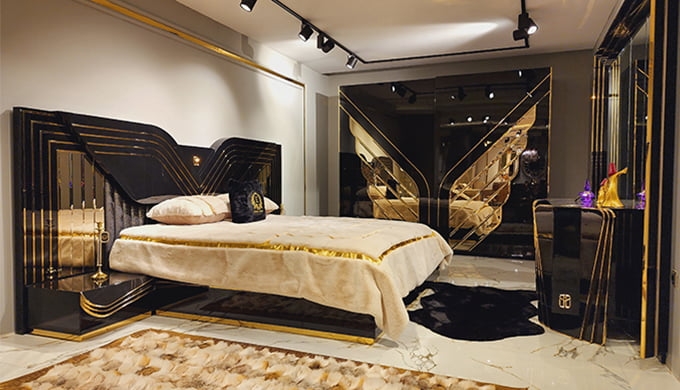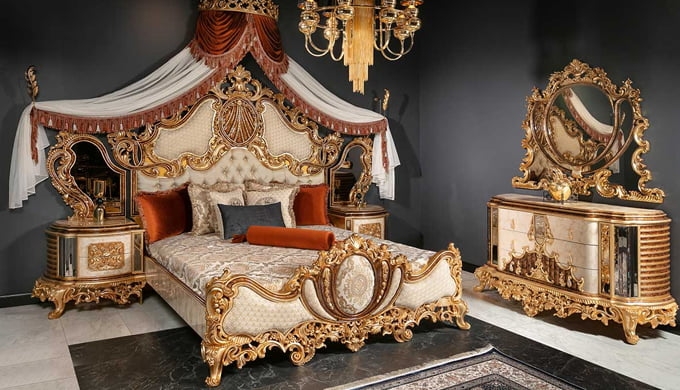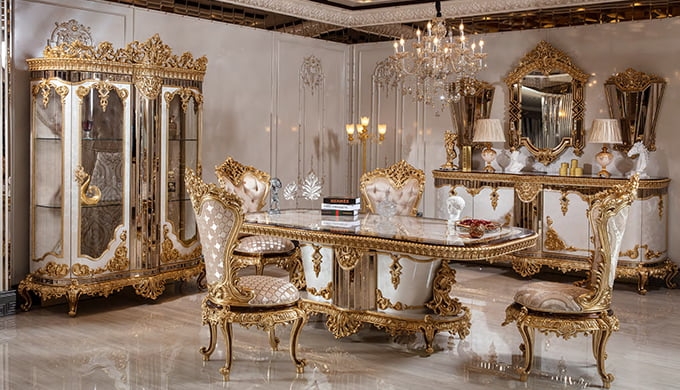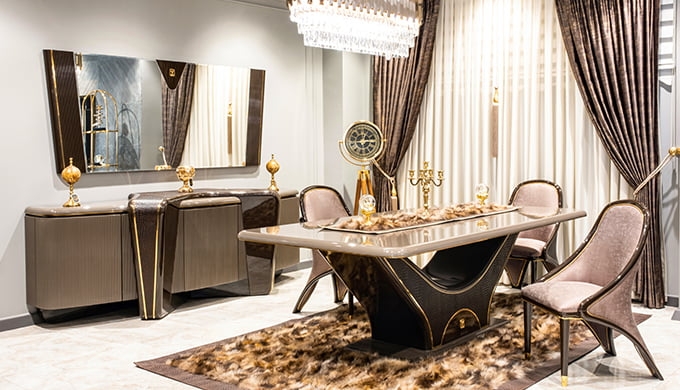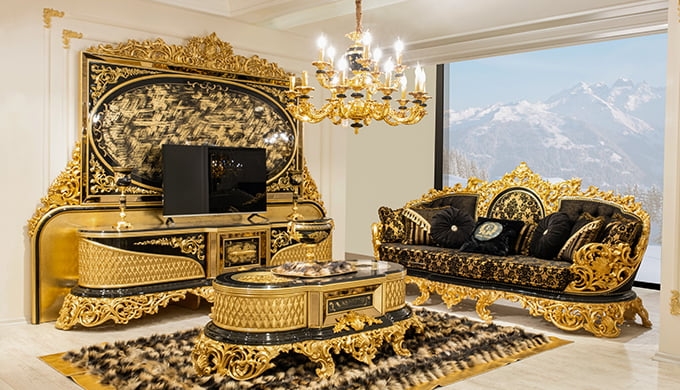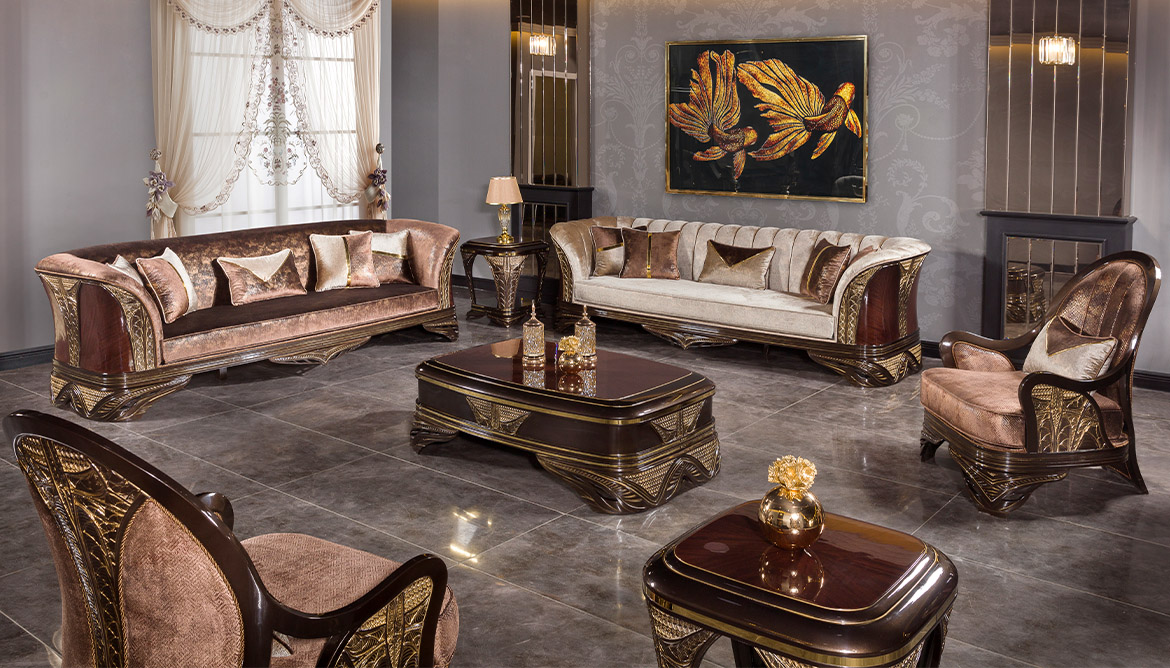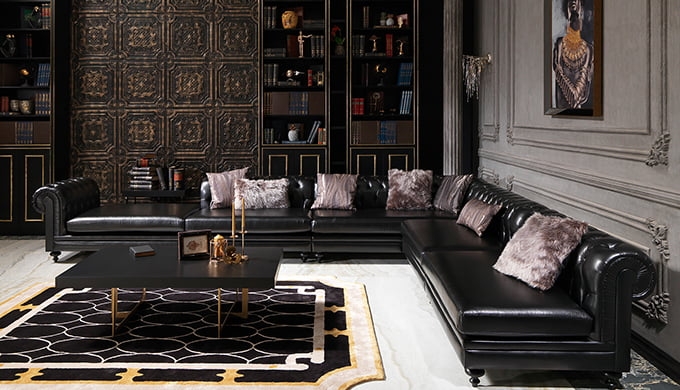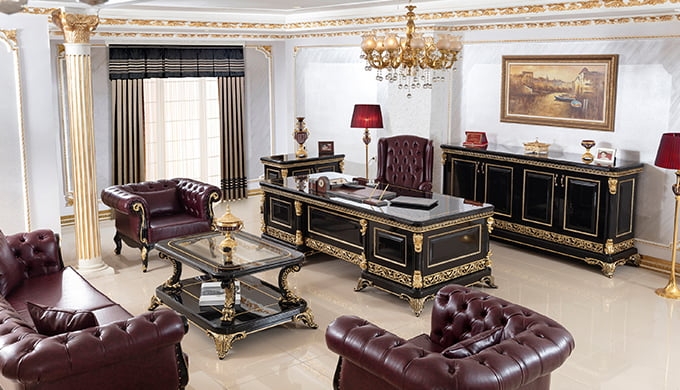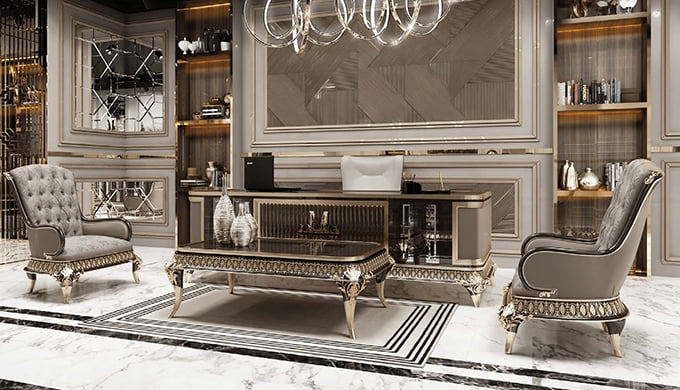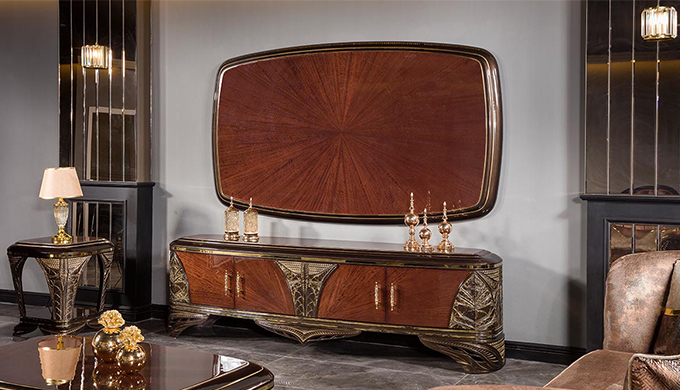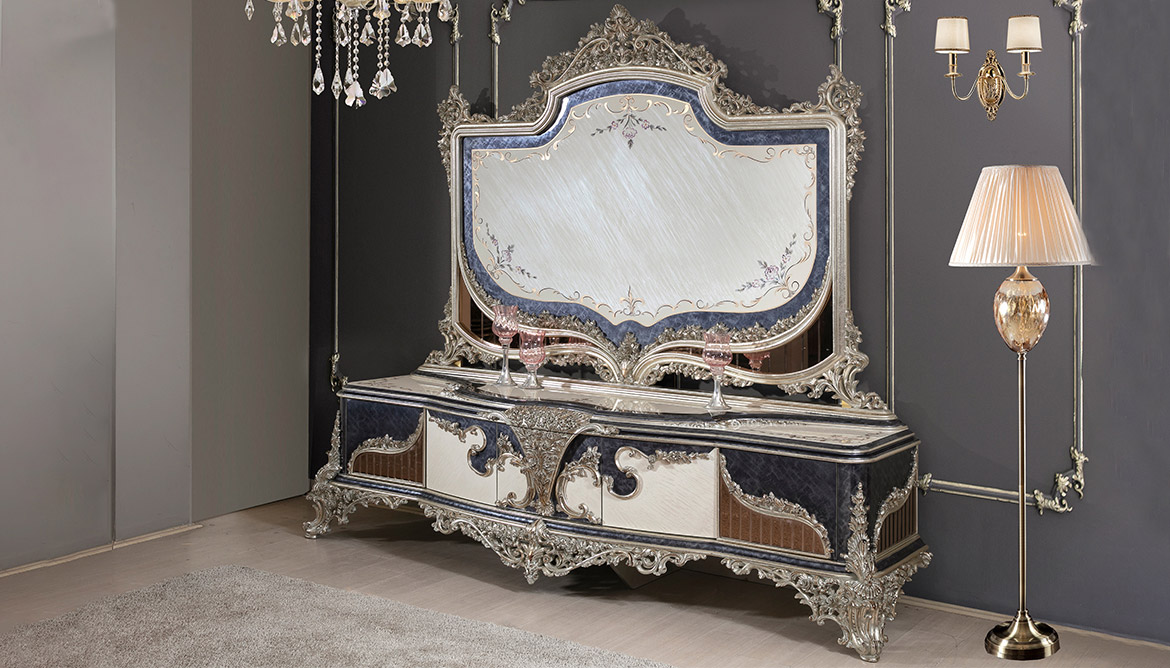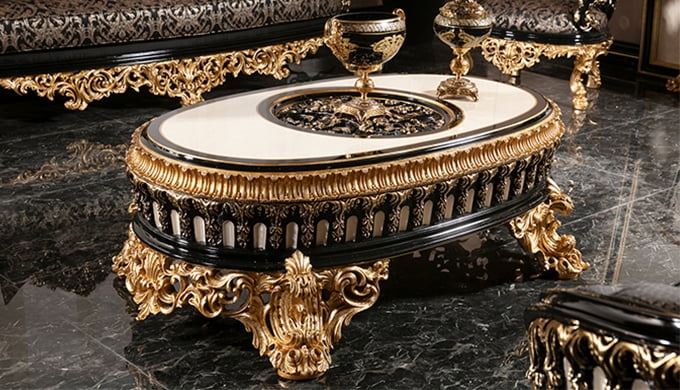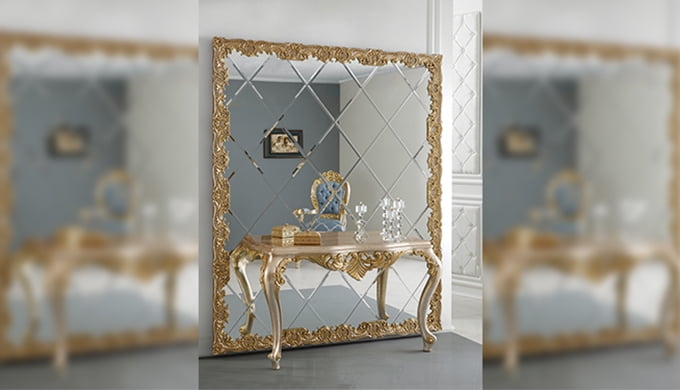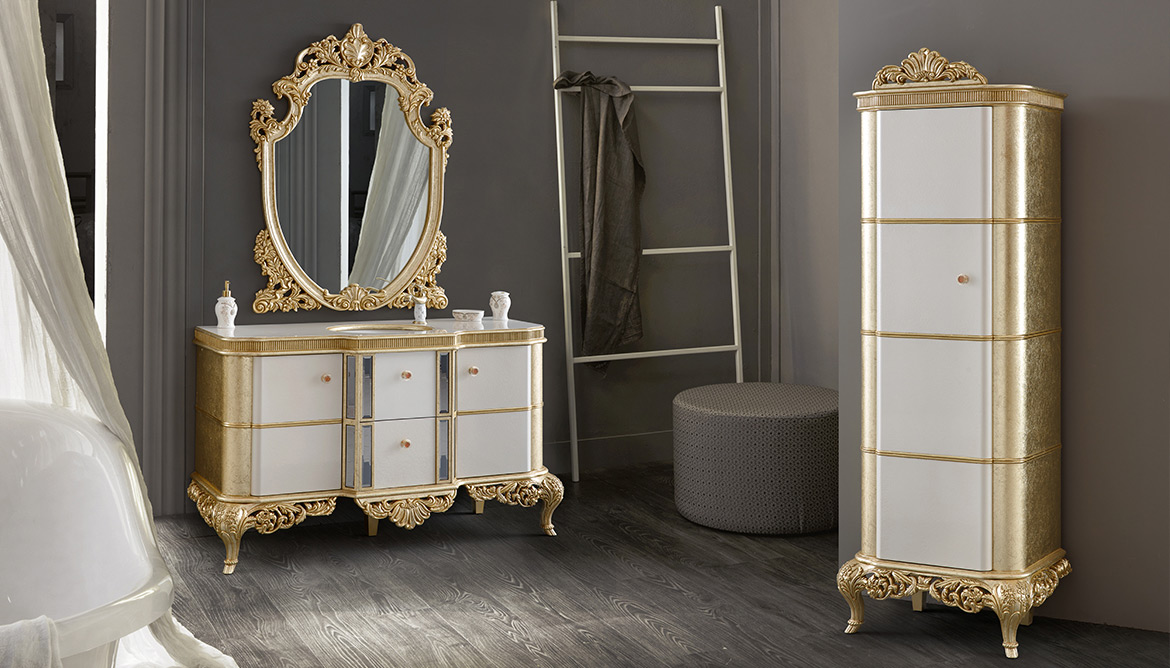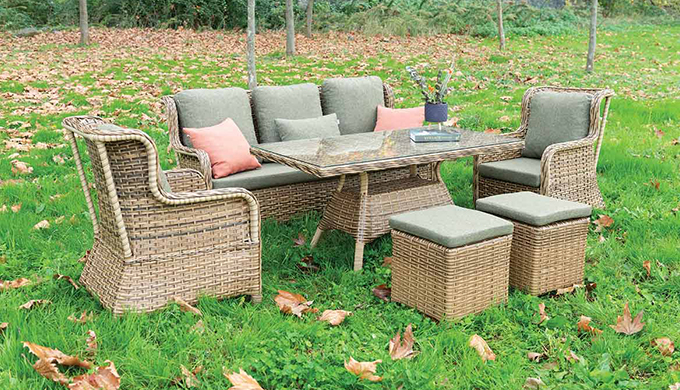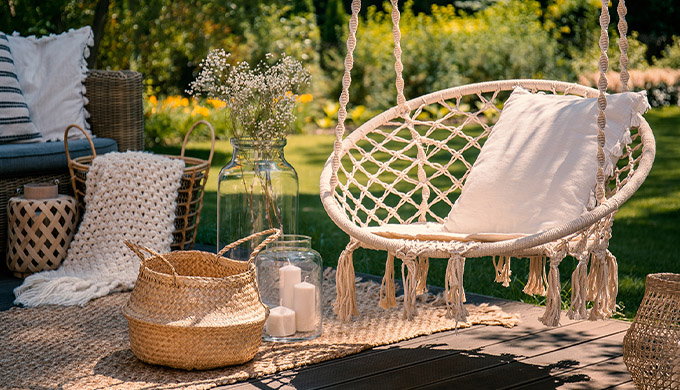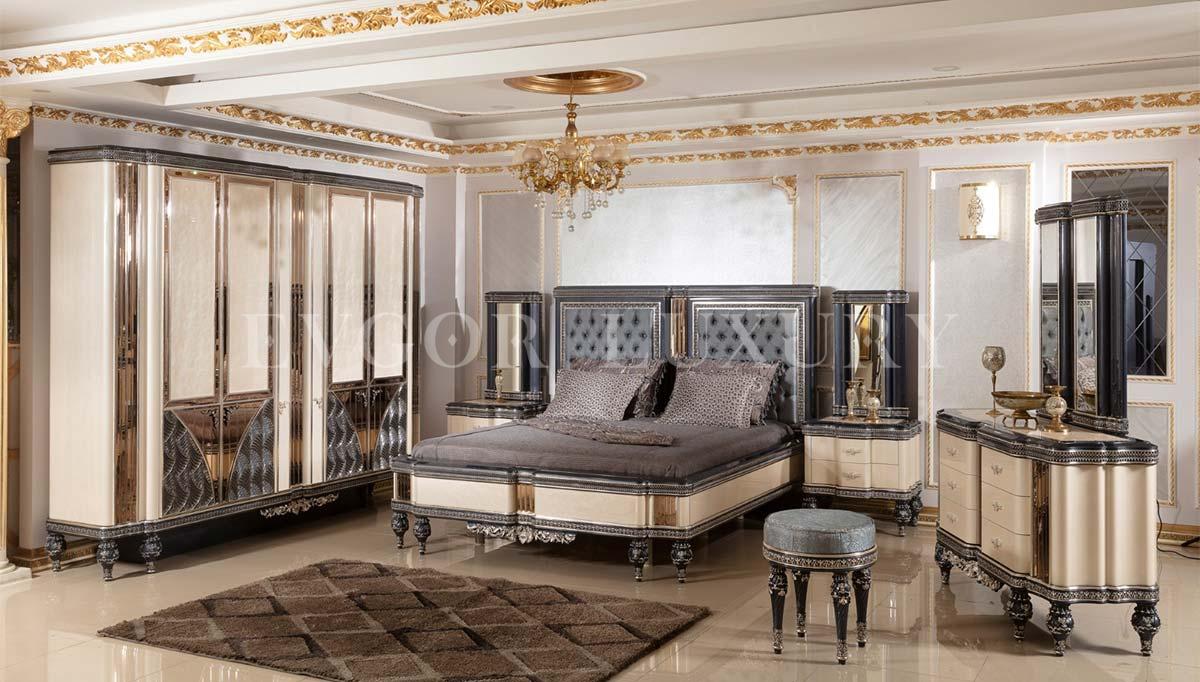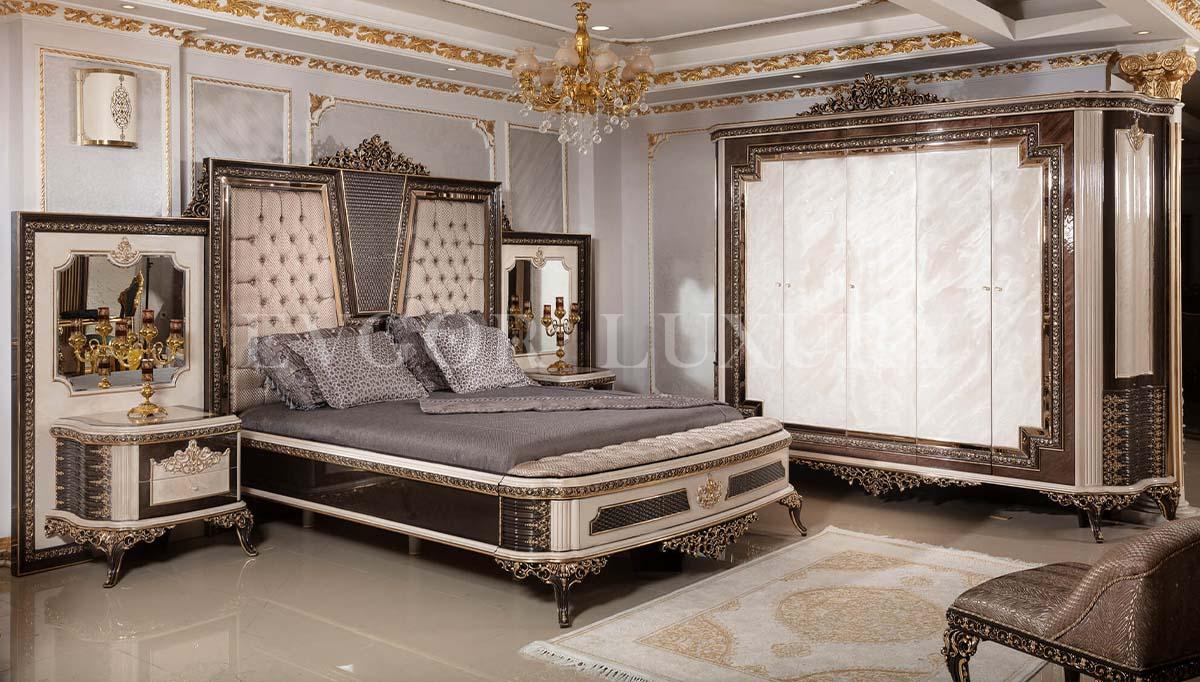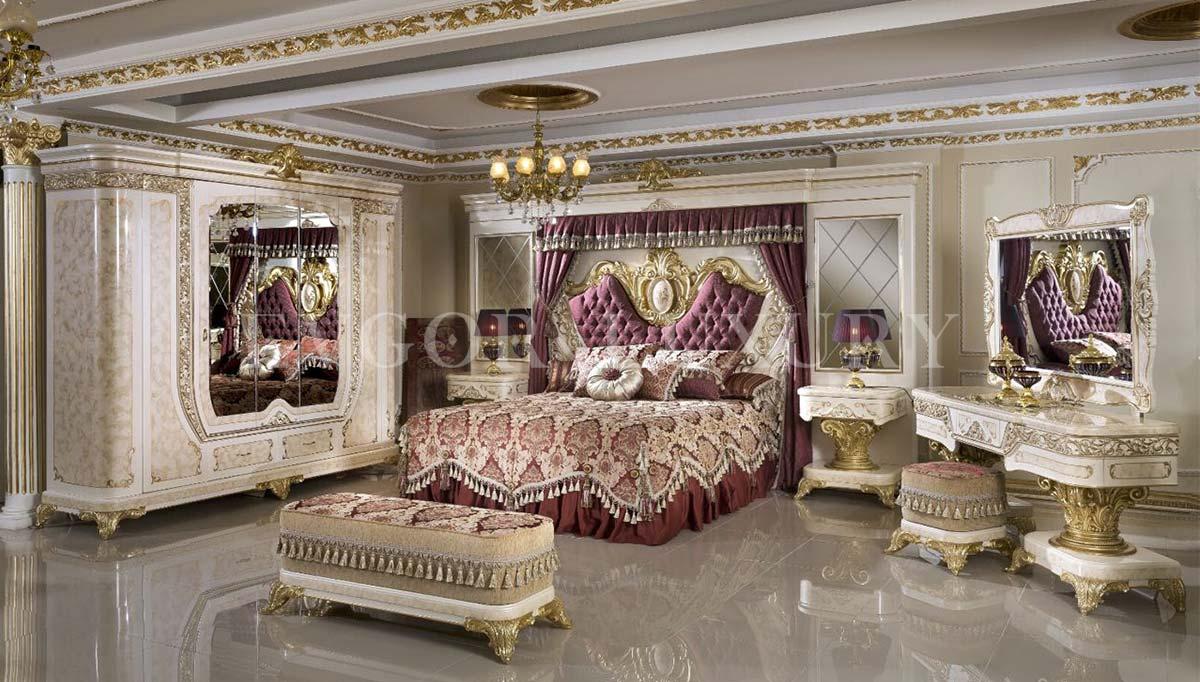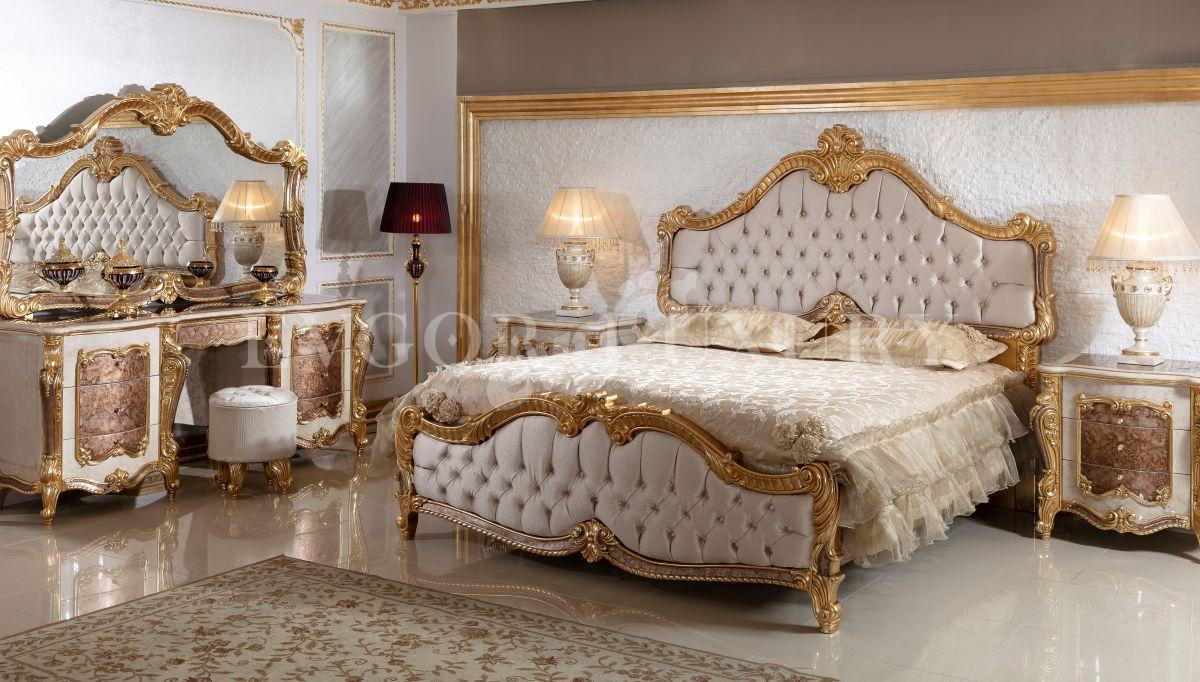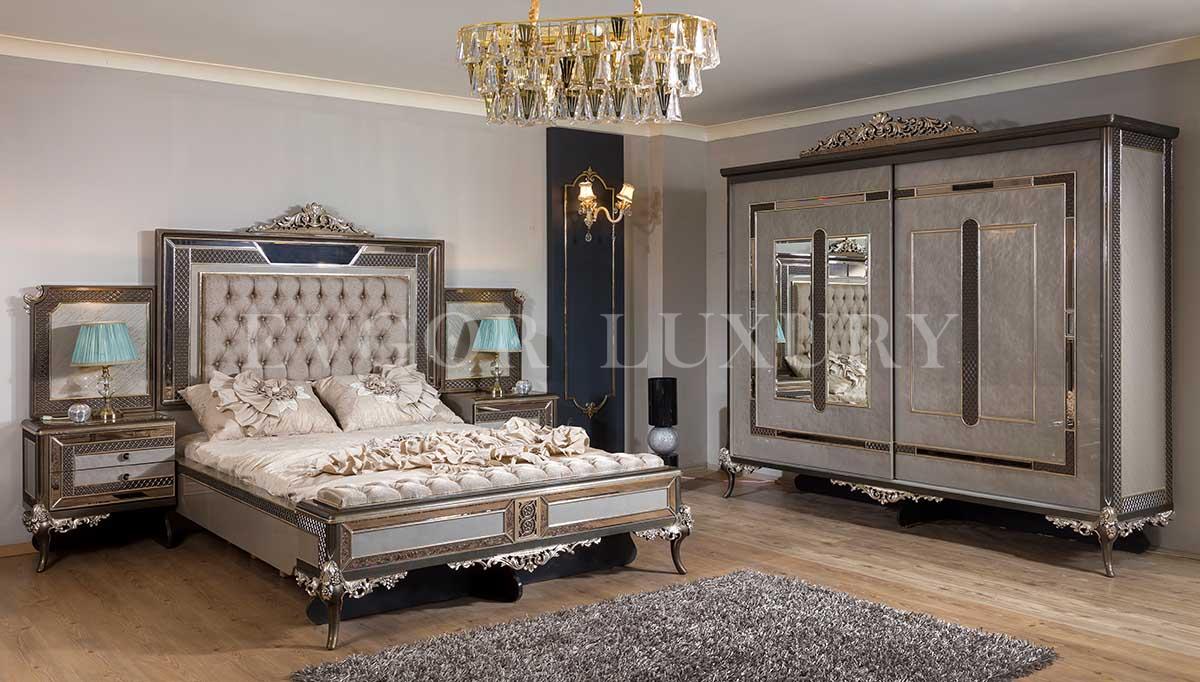Classic Bedrooms
Classic bedrooms typically feature timeless design elements that evoke a sense of elegance, sophistication, and comfort. Here are some common characteristics and design elements often found in classic bedrooms:
- Neutral Color Palette: Classic bedrooms often incorporate a neutral color scheme, with shades such as cream, beige, ivory, and soft pastels. These colors create a serene and calming atmosphere.
- Timeless Furniture: Classic bedrooms showcase furniture with traditional and elegant designs. Common pieces include a four-poster bed, canopy bed, or a sleigh bed. Wooden furniture with intricate detailing and carvings is also typical.
- Luxurious Fabrics: High-quality fabrics such as silk, velvet, and damask are commonly used for upholstery, curtains, and bedding in classic bedrooms. These materials add a touch of luxury and sophistication.
- Ornate Details: Classic design often includes ornate details and decorative elements. Look for intricate moldings, crown moldings, and baseboards. Furniture may feature carved details, and lighting fixtures might have decorative elements.
- Rich Wooden Finishes: Classic bedrooms frequently incorporate rich wooden finishes for furniture, flooring, and even wall paneling. Dark wood tones, such as mahogany or cherry, are popular choices.
- Classic Patterns: Timeless patterns like damask, floral prints, and stripes are common in classic bedrooms. These patterns are often used for bedding, upholstery, and curtains.
- Traditional Lighting: Classic bedrooms typically feature elegant lighting fixtures, such as chandeliers or wall sconces. These fixtures contribute to the overall ambiance and provide a touch of glamour.
- Symmetry: Symmetry is a key element in classic bedroom design. Matching bedside tables, lamps, and other furniture create a balanced and harmonious look.
- Soft Furnishings: Plush carpets, area rugs, and cushions add softness and comfort to classic bedrooms. These elements contribute to a cozy and inviting atmosphere.
- Art and Decor: Classic bedrooms often showcase art and decor that reflects a refined taste. Framed artwork, mirrors with ornate frames, and sculptures can be used to enhance the visual appeal of the space.
Remember that classic bedroom design can vary in its interpretation, and personal preferences play a significant role in the selection of specific elements. Whether you prefer a more traditional, European-inspired classic look or a timeless, American classic style, the key is to create a space that feels comfortable and inviting to you.
How to Choose the Best Classic Bedrooms?
Choosing the best classic bedroom involves considering various factors to ensure the design aligns with your personal taste, preferences, and functional needs. Here are some tips to help you select the best classic bedroom:
- Define Your Style:
- Classic bedrooms can encompass various styles, including traditional, Victorian, Georgian, and more. Define your personal style preferences within the classic category to guide your choices.
- Color Scheme:
- Choose a color palette that resonates with your desired atmosphere. Classic bedrooms often feature neutral tones, but you can add subtle pops of color through accessories or accent pieces.
- Furniture Selection:
- Invest in high-quality, timeless furniture. Look for classic pieces like a four-poster bed, elegant dressers, and nightstands. Consider the scale of the furniture to ensure it fits well in your bedroom.
- Material and Finish:
- Classic bedrooms often incorporate rich wooden finishes. Consider the type of wood and finish that complements your style. Darker woods like mahogany and cherry can evoke a more traditional feel, while lighter woods can create a softer ambiance.
- Fabric Choices:
- Pay attention to fabric choices for bedding, curtains, and upholstery. Luxurious fabrics such as silk, velvet, and damask can add a touch of elegance. Ensure that the fabrics complement the overall color scheme and design.
- Details and Ornamentation:
- Consider the level of ornamentation and details in the furniture and decor. Decide whether you prefer intricate carvings and moldings or a more understated classic look. Choose details that resonate with your personal taste.
- Symmetry and Balance:
- Classic design often relies on symmetry. Create a balanced look by choosing matching furniture pieces, lighting fixtures, and decor elements. This contributes to a cohesive and harmonious design.
- Lighting Fixtures:
- Select classic lighting fixtures that enhance the overall aesthetic. Chandeliers, wall sconces, and table lamps with elegant designs can add a touch of sophistication to the bedroom.
- Soft Furnishings:
- Incorporate soft furnishings such as plush carpets, area rugs, and cushions to add comfort and texture to the space. Consider patterns and textures that complement the overall design.
- Personal Touch:
- Infuse the room with your personal style by incorporating meaningful accessories, artwork, or decor. This adds a unique touch and makes the space feel more personalized.
- Functionality:
- Consider the functionality of the bedroom. Ensure that the furniture and layout meet your practical needs while maintaining the classic aesthetic. Ample storage solutions can help keep the space organized.
- Budget Considerations:
- Set a budget for your classic bedroom project and prioritize key elements. Allocate resources to invest in high-quality, timeless pieces that will endure over time.
How can I choose the right classic bedroom style?
Choosing the right classic bedroom style involves understanding your personal preferences, considering the architectural features of your home, and aligning the design with your lifestyle. Here are steps to help you choose the right classic bedroom style:
- Research Classic Styles:
- Familiarize yourself with different classic styles, such as Traditional, Victorian, Georgian, or French Country. Each style has its unique characteristics, and exploring various options will help you identify the one that resonates with you.
- Consider Your Home's Architecture:
- Take into account the architectural features of your home. Some classic styles may complement certain architectural elements better than others. For example, a Victorian-style bedroom might suit a historic home with intricate detailing, while a more streamlined Traditional style might work well in a newer construction.
- Define Your Personal Taste:
- Consider your personal preferences and the atmosphere you want to create. Do you prefer a more opulent and ornate style, or are you drawn to a simpler, understated classic look? Look for inspiration in magazines, online platforms, and home decor stores to identify elements that appeal to you.
- Explore Color Palettes:
- Classic bedrooms often feature neutral color palettes, but the specific tones can vary. Determine whether you prefer warm or cool tones, and consider accent colors. Classic styles may include rich, deep colors or softer, muted hues.
- Evaluate Furniture Styles:
- Classic bedroom furniture comes in various styles, from ornate and heavily carved to simpler and more streamlined. Consider the type of furniture that resonates with your taste. Four-poster beds, canopy beds, and elegant dressers are common in classic bedrooms.
- Visit Showrooms and Stores:
- Visit furniture showrooms and stores to see different classic bedroom setups in person. This allows you to touch and feel the materials, evaluate the craftsmanship, and visualize how different styles would look in your space.
- Gather Inspiration:
- Create a mood board or gather images that inspire you. Collect pictures of classic bedrooms, furniture, color schemes, and decor elements that you find appealing. This will help you articulate your vision and make informed decisions.
- Consider the Size of Your Bedroom:
- Take the size of your bedroom into account when choosing a style. Some classic styles may be better suited to larger spaces with high ceilings, while others can be adapted for smaller rooms.
- Mix and Match Elements:
- Don't feel confined to a single classic style. You can mix and match elements from different styles to create a customized look that reflects your taste. This can add a unique and personal touch to your classic bedroom.
- Budget Constraints:
- Keep your budget in mind. Some classic styles may involve more ornate and expensive materials, while others can be achieved with more budget-friendly options. Prioritize key pieces and invest in quality where it matters most.
- Seek Professional Advice:
- If you find it challenging to decide on a specific classic style, consider seeking advice from interior designers or home decor professionals. They can provide insights and help you tailor the style to your preferences and lifestyle.
Classic Bedroom Prices
The cost of creating a classic bedroom can vary widely depending on several factors, including the style you choose, the quality of materials and furnishings, your location, and whether you hire professionals for design and installation. Here are some general cost considerations for creating a classic bedroom:
- Furniture:
- High-quality, classic-style furniture can be a significant portion of the budget. The cost will depend on the type of pieces you choose, the materials used, and the brand. Expect to allocate a substantial portion of your budget for a bed, nightstands, dressers, and other essential furniture.
- Bedding and Linens:
- Luxurious bedding and linens, such as high-thread-count sheets, duvets, and decorative pillows, can add to the overall cost. The quality of these items will influence their price.
- Lighting Fixtures:
- Classic-style lighting fixtures, such as chandeliers, wall sconces, and table lamps, can range in price. Intricate and high-quality fixtures may be more expensive, but they contribute significantly to the overall aesthetic.
- Window Treatments:
- Curtains, drapes, or blinds in classic designs and high-quality fabrics can add to the cost. Custom window treatments may be more expensive than off-the-shelf options.
- Flooring:
- If you're considering changing the flooring, the cost will depend on the type of material you choose. Hardwood flooring is a common choice for classic bedrooms, and it tends to be more expensive than carpet or laminate.
- Rugs and Carpets:
- Area rugs or wall-to-wall carpeting can contribute to the classic ambiance of the bedroom. The cost will depend on the size, material, and quality of the rugs.
- Professional Services:
- If you hire professionals for interior design, custom carpentry, or other services, this will add to the overall cost. Design fees, labor costs, and any necessary permits or approvals should be considered.
- Decor and Accessories:
- Accessories such as artwork, mirrors, vases, and other decor items can vary in price. Consider your budget for these finishing touches.
- Paint and Wall Treatments:
- The cost of paint, wallpaper, or other wall treatments will depend on the size of the room and the materials used. Intricate wall moldings or wainscoting can add to the cost.
- Installation and Labor:
- If you're making structural changes, installing new fixtures, or assembling custom furniture, labor costs will be a factor. This is especially relevant if you're not doing the work yourself.
